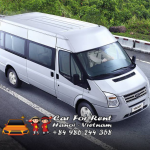Chuong Pagoda (Chùa Chuông) is a Buddhist temple located in Nhan Duc village, Hien Nam ward, about 60 km from Hanoi city center. The temple was built in the 11th century by Zen master Nguyen Minh Khong, who was also a famous poet and calligrapher.
The temple is also known as Kim Chung Tu (Kim Chung Temple) or Pho Hien Pagoda (Pho Hien Temple), because of its location in the historical and cultural complex of Pho Hien. Chuong Pagoda is famous for its distinctive architecture that resembles the Hue Imperial Citadel, with four gates, three courtyards, and a bell tower. The pagoda also houses many valuable relics, such as statues, paintings, scriptures, and a golden bell that is said to have miraculous power. Chuong Pagoda is a popular destination for pilgrims and tourists who want to admire the unique and ancient temple, as well as learn about the legends and culture of the area. In this blog post, we will show you how to rent a car to Chuong Pagoda and explore the best things to do and see in Chuong Pagoda.
Why Rent a Car to Chuong Pagoda?
Renting a car to Chuong Pagoda is one of the best ways to travel from Hanoi to Chuong Pagoda and enjoy your visit at your own pace and convenience. By renting a car, you can:
- Save time: You can avoid the hassle of finding and waiting for public transportation, which may be crowded, slow, or unreliable. You can also choose the shortest and fastest route to your destination, without having to stop at multiple places along the way.
- Save money: You can compare different prices and options online and choose the one that suits your needs and budget. You can also save on fuel costs by choosing a fuel-efficient car type.
- Have flexibility: You can choose your own itinerary and schedule, without having to follow a fixed or limited tour program. You can also visit places that are not easily accessible by public transportation, such as the Fairy Island or the Coi Temple.
- Have comfort: You can enjoy a comfortable and private mode of transportation, particularly during Hanoi’s hot and humid seasons. You can also avoid the hassle of carrying your luggage or dealing with crowded and noisy vehicles.
- Have safety: You can drive safely with a reliable and well-maintained car that meets the international standards and regulations. You can also avoid the risk of getting scammed or overcharged by dishonest drivers or operators.
How to Find the Best Deals and Services for Car Rental to Chuong Pagoda?
There are many factors that you need to consider when looking for the best deals and services for car rental to Chuong Pagoda, such as:
- Car type: You need to choose a car type that matches your group size, luggage needs, and preferences. There are different car types available for rent in Hanoi, such as economy, standard, SUV, people carrier, estate, convertible, or luxury. You can check out some examples and compare prices on platforms like Rentalcars.com1.
- Car rental company: You need to choose a reputable and trustworthy car rental company that offers high-quality cars and services. There are many car rental companies operating in Hanoi, such as Avis2, Rental Cars Hanoi3, or Hanoi Journey. You can read reviews and ratings from previous customers to get an idea of their performance and reputation.
- Pick-up and drop-off location: You need to choose a convenient and accessible pick-up and drop-off location for your car rental. The most common pick-up location is Noi Bai International Airport (HAN), which is about 45 km away from Chuong Pagoda. However, you can also choose other locations in the city, such as your hotel or a designated point.
- Booking method: You need to choose a convenient and secure booking method for your car rental. The most common booking method is online, where you can easily compare different options and prices, make reservations, and pay with cash or credit card. You can use platforms like Grab1, Welcome Pickups2, or Klook3 to book your car rental online or through their apps.
- Additional services: You need to check if there are any additional services or fees that are included or excluded in your car rental deal. Some of the common additional services or fees are insurance, fuel, driver, tolls, taxes, surcharges, or extras. You need to read the terms and conditions carefully before confirming your booking.
What to Do and See in Chuong Pagoda?
Chuong Pagoda offers a variety of attractions and activities for visitors of all ages and interests. Some of the highlights include:
- Four gates: These are the four entrances to the pagoda that are named after four directions: East, West, South, and North. The gates have a similar design to the Hue Imperial Citadel, with red walls, yellow roofs, and green doors. The gates also have inscriptions that describe the history and significance of the pagoda.
- Three courtyards: These are the three main areas of the pagoda that are separated by walls and gates. The first courtyard is where visitors can park their vehicles, buy tickets, and admire some statues and bonsai trees. The second courtyard is where visitors can see the bell tower, the main hall, and some auxiliary buildings. The third courtyard is where visitors can see the ancestral hall, the Buddha hall, and some other buildings.
- Bell tower: This is a three-story building located in the second courtyard that houses a golden bell that weighs 1.5 tons. The bell was cast in 1744 by Zen master Nguyen Minh Khong himself using his own gold jewelry. The bell is said to have miraculous power that can cure diseases, bring peace, and ward off evil spirits. The bell is rung every morning and evening by monks or nuns who live in the pagoda.
- Main hall: This is a large building located in the second courtyard that is dedicated to Zen master Nguyen Minh Khong. The hall has a spacious interior with wooden pillars and tiled roofs. The hall also features many paintings, scriptures, statues, and relics related to Zen master Nguyen Minh Khong’s life and teachings. The hall is where visitors can pay respect to Zen master Nguyen Minh Khong’s statue and learn about his achievements and contributions.
- Ancestral hall: This is a small building located in the third courtyard that is dedicated to Zen master Nguyen Minh Khong’s ancestors who were also devout Buddhists. The hall has a simple but elegant architecture with wooden pillars and tiled roofs. The hall also houses some statues of Zen master Nguyen Minh Khong’s ancestors who were influential figures in Vietnamese history.
Conclusion: Enjoy Your Visit to Chuong Pagoda with Car Rental
As you can see, renting a car to Chuong Pagoda is one of the best ways to visit this unique and ancient temple from Hanoi. By renting a car, you can save time, money, have flexibility, comfort, and safety while exploring the distinctive architecture and culture of Chuong Pagoda.
We hope this blog post has helped you learn more about car rental to Chuong Pagoda and how to visit this attraction with ease. If you have any questions or comments, feel free to leave them below. We would love to hear from you!
Hung Yen Chuong Pagoda is a project of brilliant design style belonging to Pho Hien historical relic complex. The temple is famous for its unique design style system, ancient statues and is praised as “the most famous Pho Hien”. If you have the opportunity to come to Hung Yen, do not miss this absolutely perfect place.
Where is Chuong Pagoda?
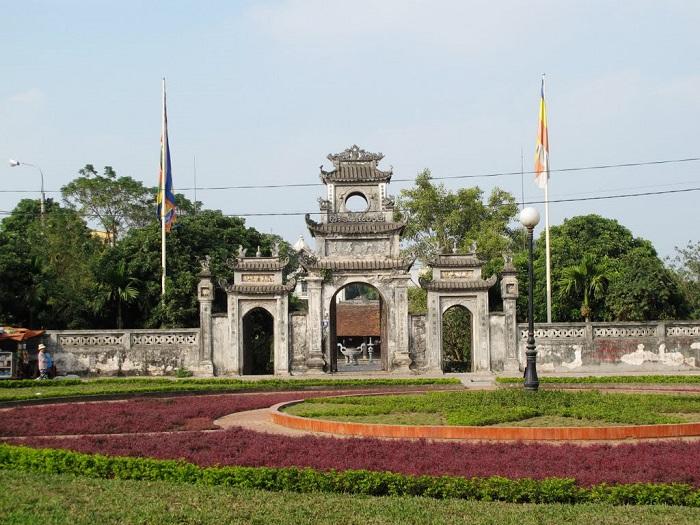
It is not necessary to go to the dreamy city of Hue to admire the magnificent Hue citadel. Even in the peaceful land of Hung Yen, there is always an ancient project that is likened to a miniature version of the Hue Imperial Citadel. That is Hung Yen Chuong Pagoda, many of you are also known as “the most scenic Pho Hien”.
Contact us:
Car For Rent Hanoi VietNam
https://zalo.me/0986244358
Visiting Hung Yen Bell Pagoda
Chuong Pagoda has a different name from another common name, Kim Chung Tu. Located right in Nhan Duc village, belonging to Pho Hien historical relic complex. Over time, the temple is increasingly transformed into an ancient glass and attracts most tourists to visit.
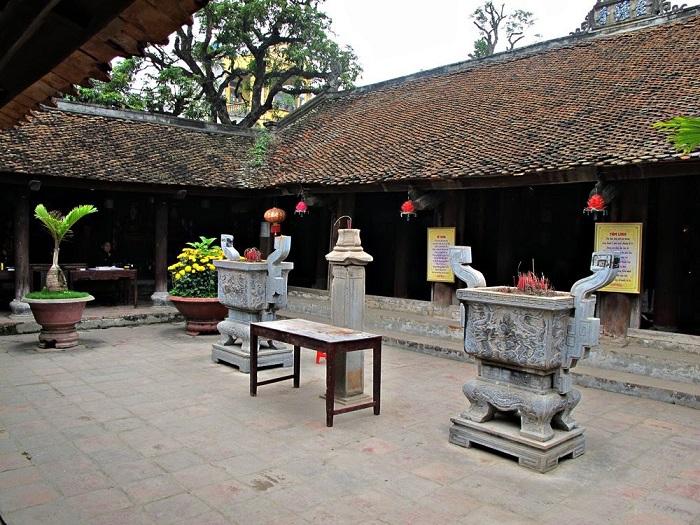
In the temple, there are many valuable ancient relics such as: parallel sentences, diaphragms, stone stele, worshiping objects, among which the stele “Kim Chung self-tach bi Ky” built in 1711 depicts the place where the scenery in the temple and people are located. have construction work. Through this relic, researchers have guessed that there is a trade street between Thang Long and Pho Hien located right at the door of the temple. In addition, it is also certified that at that time Hien Street included 12 local wards.
With the prices of unique design and politeness, Hung Yen Chuong Pagoda has been ranked by the Ministry of Traditional Culture, Sports and Tourism as a National Historical Relic and with artistic and aesthetic design style. family. The pagoda is also one of the 16 most typical historical monuments in the Complex of historical relic “National famous Pho Hien historical relic area”.
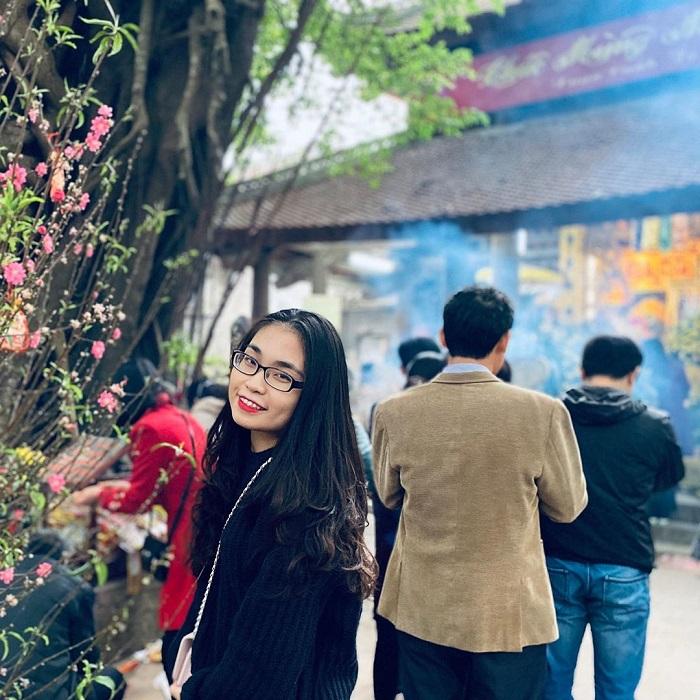
Common name Chuong pagoda
According to legend, in one of the years of the great flood, there was a golden bell on a raft drifting into the riverbank in the area of Nhan Duc village, An Tao canton, Kim Dong district, Khoai Chau district, Hung Yen province in the past. now belongs to Hien Nam ward, Hung Yen city).
The places race to pull the bell to their homeland but have not been able to. Only the elders of Nhan Duc village can pull the bell. The villagers thought that God and Buddha helped, so they contributed to building the pagoda and building the bell tower. The ringing of the bell, echoes thousands of miles away. Therefore, the pagoda is often called Kim Chung Tu (golden bell temple), the name is Chuong pagoda.
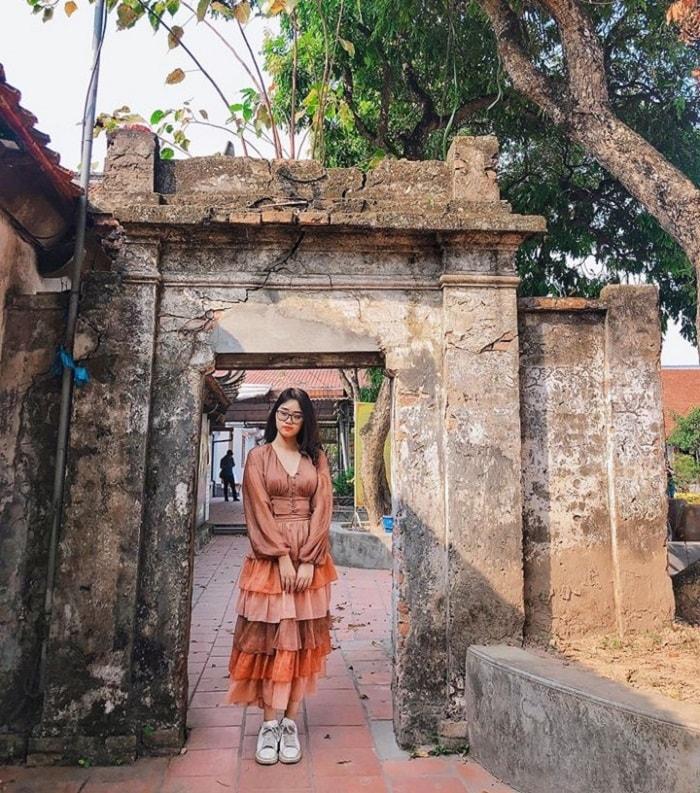
Legend of Chuong Pagoda
Legend has it that around the time of the great flood, there was a golden bell on a raft drifting into the riverbank in the area of Nhan Duc village, An Tao canton, Kim Dong district, Khoai Chau ward, ancient Hung Yen province (now in Hien Nam ward. , Hung Yen city). The places race to pull the bell to their homeland but have not been able to. Only the elders of Nhan Duc village can pull the bell.
See More: Review Visiting Hien Hung Yen street where, what, what to eat 2022
The villagers thought that God and Buddha helped, so they contributed to building the pagoda and building the bell tower. The ringing of the bell, echoes thousands of miles away. Therefore, the pagoda’s name is Kim Chung Tu (golden bell temple).

How is the way to Chuong Pagoda?
To go to Hung Yen Chuong Pagoda, you can always choose a coach, bus or motorbike. If you transfer by bus, you can take the bus from Hanoi to Hung Yen of Hoang Vinh. The bus has stops at Gia Lam and Giap Bat bus stations and moves from 5 am to 10 pm. If traveling by bus, take bus 205, 208 or 40.
If you go by motorbike or holy fish car, follow the following route. From the center of Hanoi, go to Long Bien or Chuong Duong bridge to National Highway 5. When you reach the junction, there will be a signpost leading to Hung Yen. You go straight towards Noi street to the intersection with Highway 39A, then turn left. Follow Highway 39A about 30km, you will come to Hung Yen.
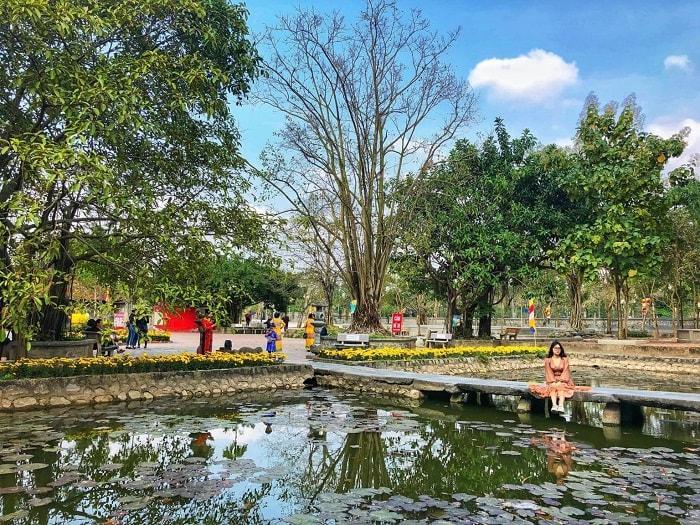
History of Hung Yen Chuong Pagoda
According to the legend of Chuong Pagoda, there was a golden bell on the raft that was pushed into this place by water during a great flood. At that time, no one could pick up the bell, only when the abbot stayed in the temple for 10 years and selected 10 male and female students, it was very possible to move the bell. Then the villagers built the tower and hung the bell in the temple.
Hung Yen Bell Pagoda has a history closely connected with the past of the nation
When Vietnam suffered from foreign invasion of the North, that precious bell was hidden in a small well. Up until this point, the exact set point hidden by the bell had always been a mystery. The common name Chuong Pagoda or Kim Chung Tu is also derived from that.
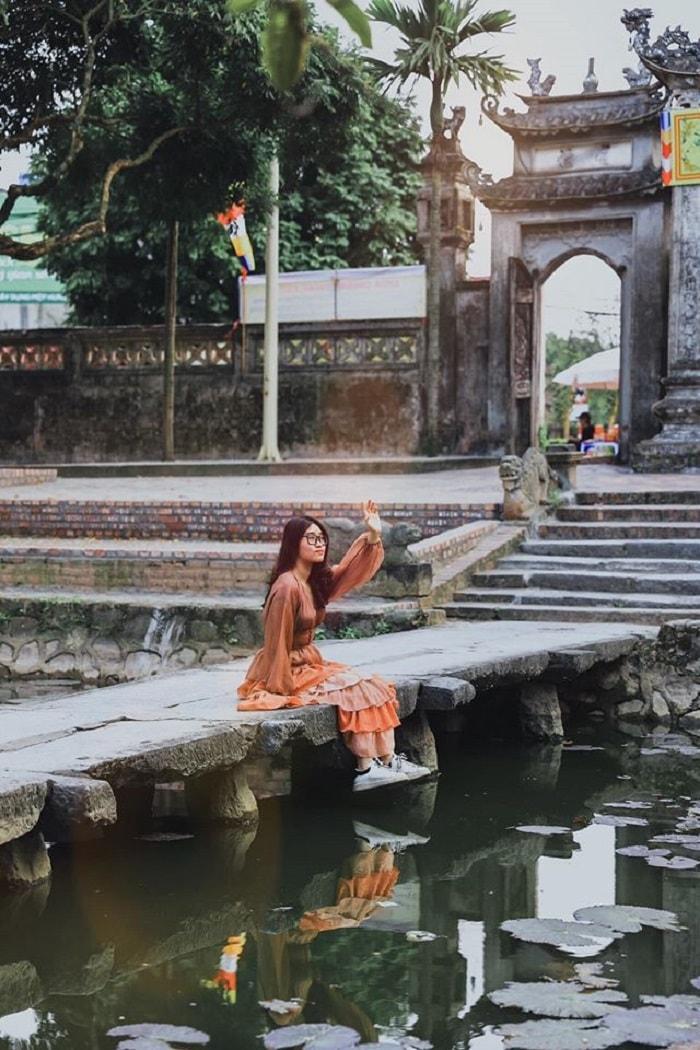
According to the book Dong Khanh Du Ge, Hung Yen Chuong Pagoda was built in the Later Le Dynasty (about the 15th century). However, the standard deadline has not yet been agreed. There are a few researchers who believe that Chuong Pagoda was discovered from the Le Dynasty, but there are a few studies that confirm that the temple was built in the 3rd century AD. The stele in the temple has remained unchanged since the 17th century, on the stele the restoration progress is kept but the date of establishment is not specified.
Young and beautiful design style of Hung Yen bell pagoda
Hung Yen Chuong Pagoda is a design style complex with a harmonious overview of “internal and external affairs” continuously. The pagoda has a commensurate design on an axis starting from the Tam Quan gate to the Ancestor’s house, including the design styles: Tam Quan, Tien Duong, To’s house, bell tower, Upper palace and 2 rows of village corridors, … of the temple turns to the south.
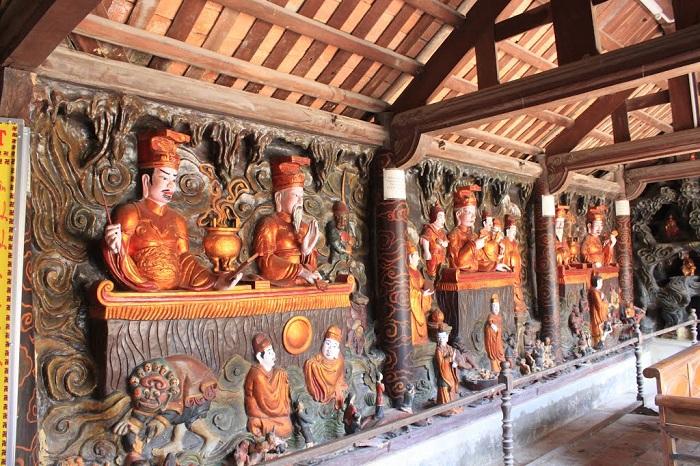
Going through Tam Quan gate, you will reach the “dragon’s eye” pond, at the lake planted with many lotus flowers and especially with a stone bridge built in 1702. Through Tam Quan and the “dragon eye” pond you feel As I am inspired, I also turn into pure purity, removing all dust to move towards the good. Next you will come across a most righteous street.
See More: Review Where to visit Hien Hung Yen pagoda, history, architecture 2021
It is the unique street that brings sentient beings out of misery and suffering. Connecting between the front hall and the upper hall, there will be a courtyard. In the middle, there are stone incense trees that have been processed since 1702. The four sides of the tree show the merits of the people who have repaired the pagoda.
Inside the Hung Yen Chuong Pagoda, there is a system of Buddha statues of many different types, such as: Di Da Tam Ton, Tam The, Cuu Long statue, etc. Among the most prominent are 8 Diamond statues, 4 Bo statues. Slaps, 18 Arhats. These statues are all meticulously crafted with different poses, designs and mood expressions. The temple still has a relief of the Ten Palaces of Diem Duong depicting the scene of the King of Hell punishing the wicked. Two Buddha-earth caves save the progress of Buddha’s cultivation and enlightenment.
Coming to Chuong Pagoda, you will have the opportunity to admire the ancient features that are unique designs and styles of the Later Le period, which are still unchanged on the roof of Tam Quan or the gate. The pagoda door has a design style of 3 matches stacked on 3 floors and 12 roofs, a sign of harmony but also very majesty. In the temple cages, there are images of four spirits and stone statues standing in adoration, the curved roof signifies the sacredness of the Buddha’s door.
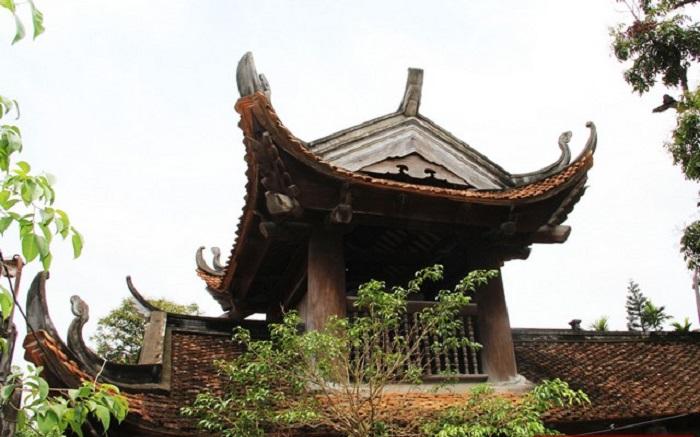
What to eat at Chuong Pagoda?
After visiting and sightseeing the temple, there are a few delicious restaurants you can always find out more below:
*Vietnamese Rice Restaurant – Doan Thi Diem
Address: 158 Doan Thi Diem, City. hung Yen
*Manh Hoach Fresh Chicken Restaurant – Hung Yen
Address: 155 Chuong Chua, City. hung Yen
*Restaurant No. 2
Address: 503 Nguyen Van Linh, City. Hung Yen, Hung Yen
*Thuy Duong Restaurant
Address: 53 Trung Trac, City. Hung Yen, Hung Yen
When is the perfect season to travel to Hung Yen?
Going to Hung Yen, you should choose at the time of each major festival season such as Da Temple, Mother Temple, Hoa Da Temple and Da Trach Temple. Mainly the festival launches on a spring day. In addition, you can always combine sightseeing in the chrysanthemum season in late December, early January.
Besides, Hung Yen also survives famous specialties such as longan, orange sugar soup or Ban soy sauce. Very suitable to buy as gifts, for relatives. Or buy and enjoy.
Buddha’s Birthday Celebration at Chuong Pagoda
Every year, on the full moon day, the 1st day of the lunar calendar or the occasion of the Buddha’s birthday, Chuong Pagoda is the chosen destination of many local people and tourists from far away to worship. Coming to the Buddha ceremony, visiting the temple is peaceful and pure, in the hearts of tourists, it is as if all the chaos and worries are removed. Here you will find peace of mind for yourself.
Experiencing many ups and downs of history, although Hien street is not a bustling commercial port, users and sellers, but Chuong Hung Yen pagoda has always stood proudly among the shadows of ancient trees. That quiet ancient feature is enough to hold the hearts of many travelers far away.
Popular spiritual places to visit in Hung Yen
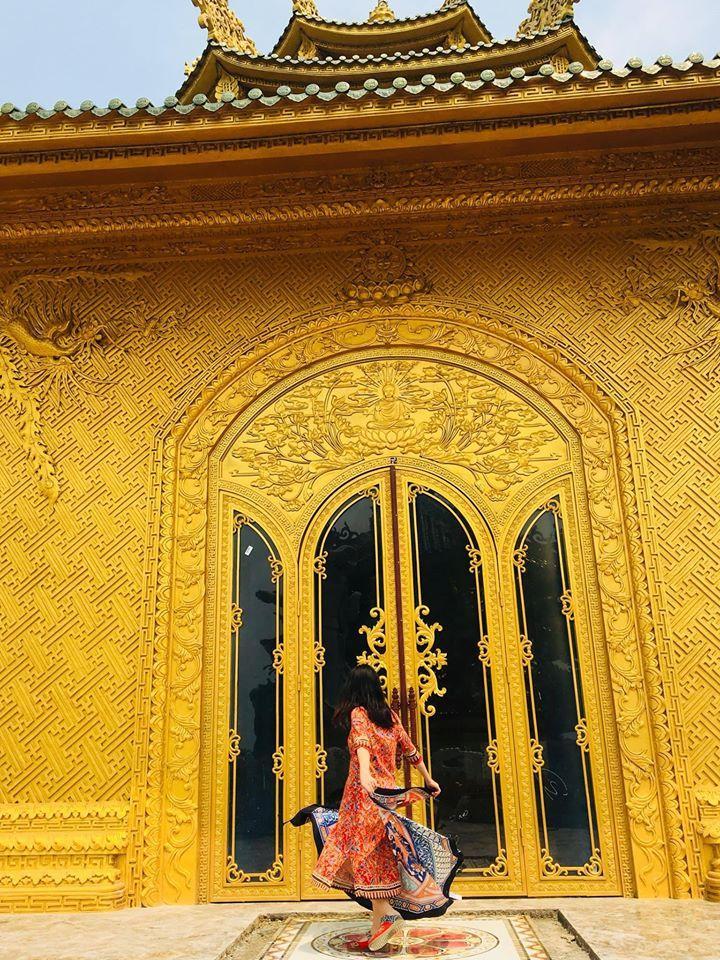
Phuc Lam Pagoda
Address: Phuc Lam Pagoda, La Mat, Phu Ung, An Thi, Hung Yen
Phuc Lam Pagoda is an ancient temple located in a quiet countryside in Hung Yen province. As a sacred cult temple, the pagoda is a place of worship and sightseeing of the people of the land and neighboring provinces. Properties, after the recent restoration, Phuc Lam Pagoda is more and more attractive with its gilded body like miniature Thailand.
Nom Pagoda
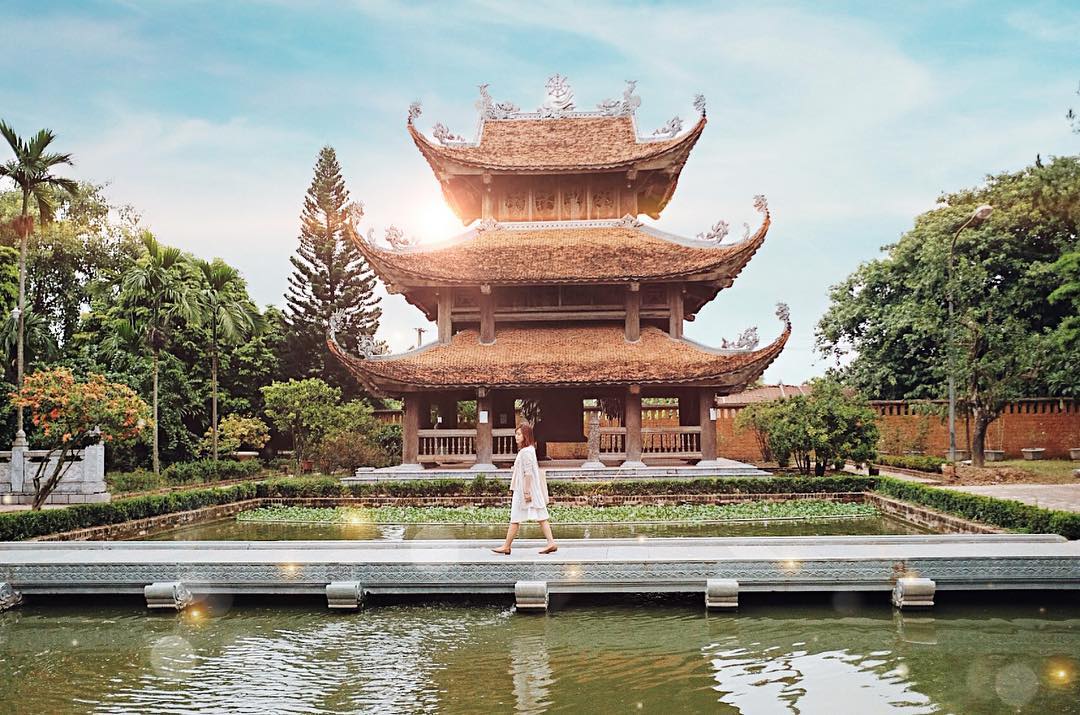
Address: Nom Village, Van Lam, Hung Yen
Referring to the ancient pagodas in Hung Yen, it is considered a big omission to ignore Nom Pagoda. As the second largest temple in Southeast Asia, Nom Pagoda occupies a unique and ancient design style. The pagoda is the outstanding spiritual choice destination of the locals and a spring tourist destination that attracts countless tourists from all over the world.
Xich Dang Temple of Literature
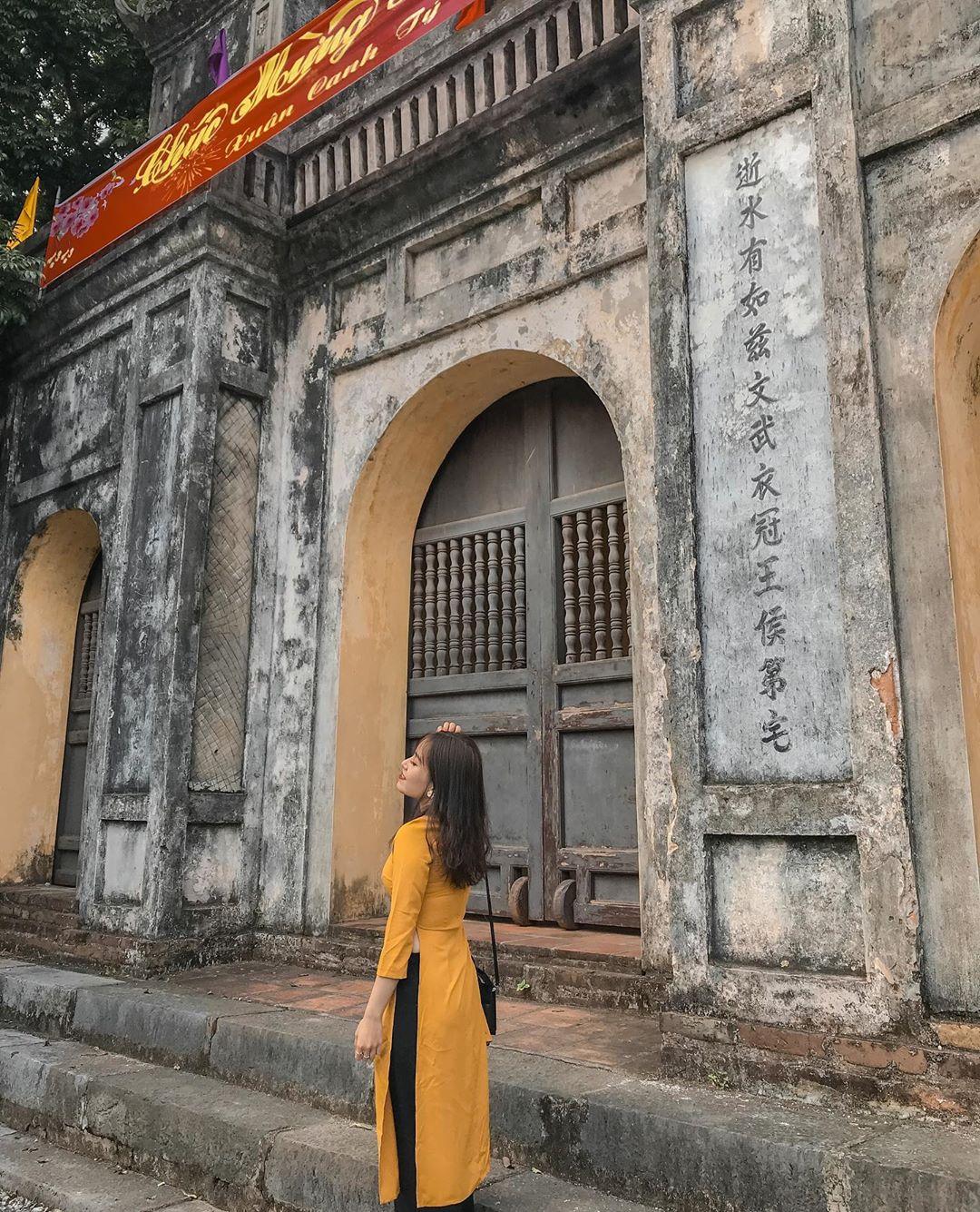
Xich Dang Temple of Literature is a long-standing historical relic and the pride of many Hung Yen residents. As a small temple in the 17th century, the Temple of Literature was spread to a model of up to 4 thousand m2 in the Nguyen Dynasty. After 4 centuries of existence, the Temple of Literature has not changed its ancient appearance with 9 ancient steles registering the houses of the ancient faculties in the green park.
Address: Xich Dang Hamlet, Lam Son Ward, Hung Yen City, Hung Yen
Thank you Nguyen Phuong Anh for your beneficial sharing. If there is no opportunity and case to visit Hue dream Hue dream. Then let’s visit with Halotravel the ancient Hung Yen Bell Pagoda which is likened to the miniature Hue Citadel close to Hanoi capital once!

